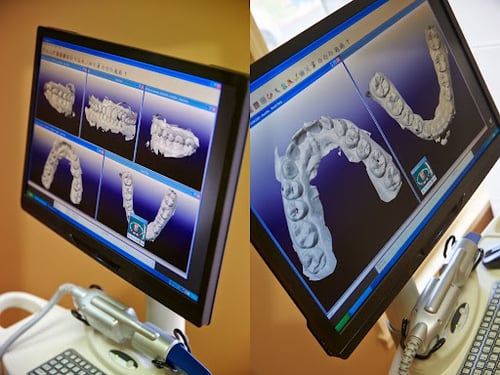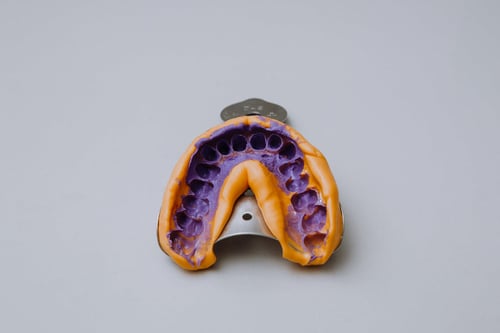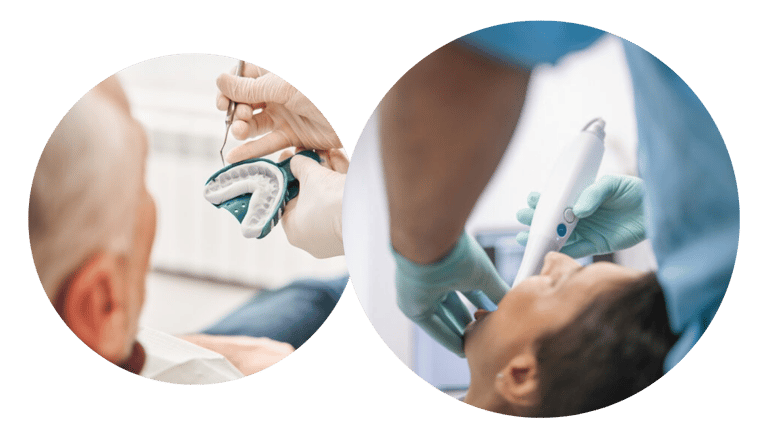Dental impressions is an essential part of dental treatment as they provide precision and accuracy to delivery outstanding dental results. Today, we explore a crucial aspect: the comparison between physical and dental digital impressions. Understanding their differences is important for dentists and patients seeking optimal dental care.
Physical Dental Impressions

Physical dental impressions are the conventional method of moulding a patient’s teeth using impression materials like alginate or silicone. This method has been a foundation in dentistry for decades, capturing accurate teeth structures manually.
| Advantages | Disadvantages |
| Precise detail capture | Uncomfortable for some patients |
| Cost-effective | Potential for distortion during transit |
| Familiarity for practitioners | Time-consuming process |
Dental Digital Impressions

Digital dental impressions revolutionise the process by utilising intraoral scanners to create a 3D teeth model. This technology eliminates the need for traditional impression materials, relying on advanced imaging for precise results.
| Advantages | Disadvantages |
| Comfortable for patients | Initial high equipment cost |
| Improved Accuracy | Learning curve for practitioners |
| Efficient and time-saving | Dependency on reliable technology |
The Process Of Dental Impressions
Traditional Method

The conventional method involves the manual placement of impression trays in a patient’s mouth, followed by the setting of the material before removal for casting. A main overview of the process includes the following aspects:
- Materials Used: Practitioners typically employ materials like alginate or silicone putty. When mixed appropriately, these materials form a malleable substance that can capture the intricacies of the teeth.
- Procedure: The process starts with placing an impression tray filled with the chosen material into the patient’s mouth. Ensuring the tray covers all teeth or the specific area requiring impressions is crucial. The material sets within a few minutes, forming a mould that captures the teeth’s structure and surrounding tissues.
- Removing the Impression: The tray is gently removed from the mouth once the material has been fully set. Care must be taken to prevent distortion or damage to the impression. This mould is then used to create a plaster model, replicating the patient’s teeth for further analysis or treatment planning.
- Considerations: While effective, the traditional method can sometimes induce discomfort in patients due to the duration the tray is in the mouth. Moreover, factors like saliva or movement during the setting may impact the accuracy of the impression.
Digital Method

Digital impressions involve scanning the teeth with an intraoral wand, instantly generating a digital replica, allowing immediate adjustments if necessary. A main overview of the process includes the following aspects:
- Intraoral Scanners: Digital impressions use intraoral scanners equipped with cameras and optical sensors. These scanners capture images of the teeth and surrounding structures in remarkable detail.
- Scanning Process: The practitioner guides the small wand-like scanner inside the patient’s mouth, capturing multiple images. These images are then compiled into a 3D digital model in real-time, providing an immediate visualisation of the teeth and gums.
- Real-time Adjustments: If any area needs further attention or refinement, it can be addressed instantly without the need for additional impression materials.
- Materials: Unlike traditional impressions, digital impressions eliminate the need for physical materials like putty or alginate, relying solely on advanced imaging technology.
- Accuracy and Efficiency: Digital impressions offer unparalleled accuracy, minimising potential errors that might occur during the traditional moulding process. Additionally, the efficiency of digital impressions significantly reduces chair time for patients.
Applications Of Dental Impressions
| Applications | Physical | Digital |
| Dentures |
|
|
| Crowns |
|
|
| Clear aligners |
|
|
| Scanners |
|
|
| Bridges |
|
|
| Orthodontic Appliances |
|
|
Which One Is Right For You?

Determining the suitable method depends on various factors such as patient comfort, procedure complexity, and practitioner expertise. While traditional impressions remain viable, digital impressions offer accuracy and efficiency, particularly for intricate procedures.
The choice between digital and physical dental impressions will be up to your needs, but understanding their differences empowers both practitioners and patients to make informed decisions, ensuring optimal outcomes for dental procedures.
Elevate Your Practice with Southern Cross Dental Lab Services
Explore the advanced services Southern Cross Dental Lab offers.
For digital impressions, you can send your digital scans from different Intraoral Scanners, including:
If sending digital impressions to our lab, be sure to register for the digital rebate and earn with each scan!
Our commitment to innovation and precision can complement your practice, delivering exceptional results for your patients. Whether you need digital impressions or supplies for physical impressions, we’re your team!
Learn more about our services and start a journey towards elevated dental care.

